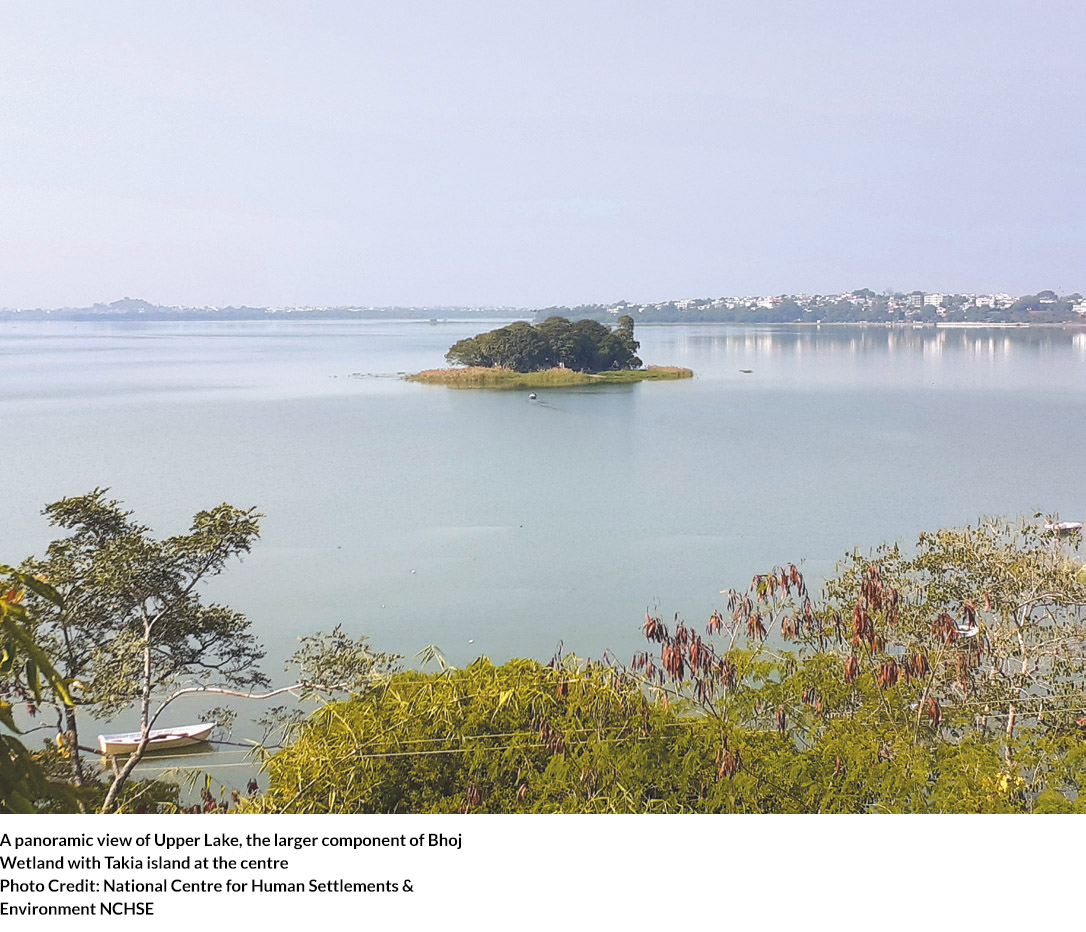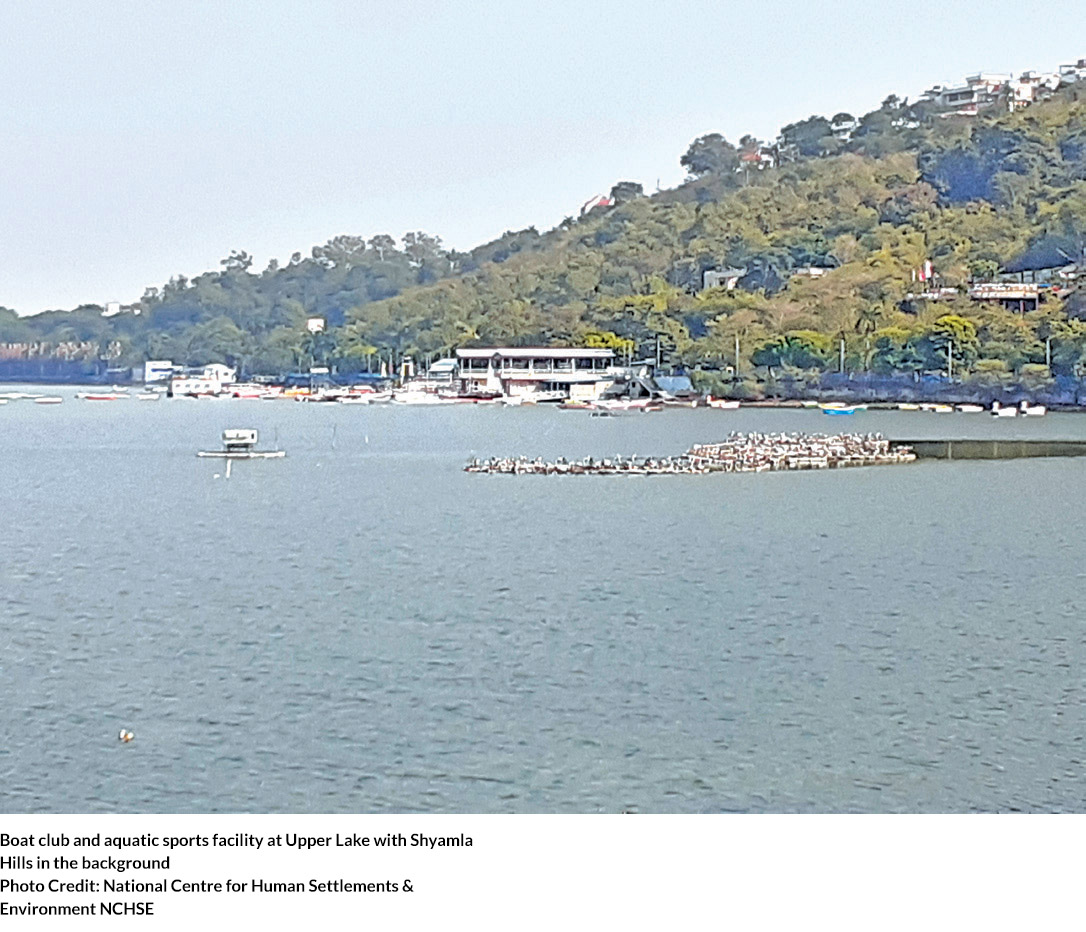| nature in the city
IS WISE USE OF BHOJ WETLAND, A RAMSAR SITE, A DREAM?
Pradip Nandi
LA 77 |
|
| The Bhoj Wetland, a Ramsar site, is vital for biodiversity, water supply, and livelihoods. Despite conservation efforts, post-project mismanagement threatens its health, demanding urgent government action.
|
|
 |
|
The Bhoj Wetland
The history of Bhopal, the capital of Madhya Pradesh, dates back to the 11th century CE. The city, resting on the Malwa plateau, is the home to many rivers and lakes, including two man-made heritage lakes – the Upper Lake (locally called Bada Talab), and the Lower Lake (locally called Chhota Talab), named so due to altitudinal differences and being located one after the other. The Upper Lake was created in the 11th century CE during the reign of Raja Bhoj, the ruler of Dhar, by obstructing the natural flow of the Kolans, a rainfed tributary of Betwa River by constructing an earthen dam across the valley between the two hills now known as Idgah and Shyamla hills, dominates the city landscape. The excess water of the lake is discharged into the Kaliasote reservoir constructed across the Kaliasote River, the tributary of the Betwa River. The Lower Lake, created by constructing another dam downstream of Upper Lake in the late 18th century to beautify the city, discharged into the Patra Nala, a tributary of the Halali River.
|
|


|
|

|
|
|
|
|